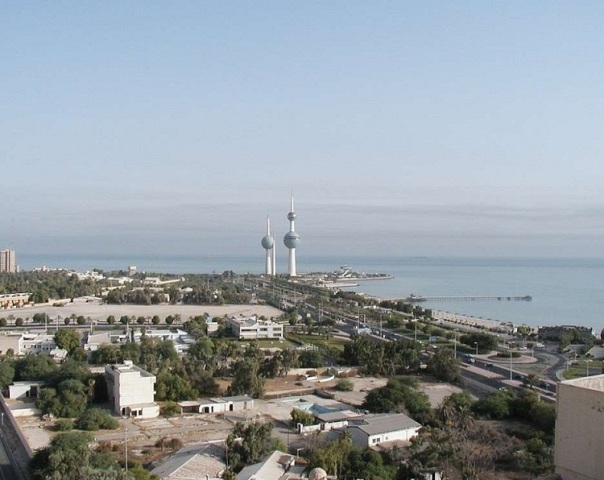Kuwait is an Arab country that functions like a sovereign emirate and lies on the coast of the Persian Gulf. With this article, get to know some fun & interesting facts about Kuwait.
Facts About Kuwait
Kuwait is a sovereign emirate, situated on the coast of the Persian Gulf. It stands bordered by Saudi Arabia in the south and Iraq in the north and west. Kuwait comprises of nine islands, where it exercises sovereignty, namely Auhha, Bubiyan, Failaka, Kubbar, Miskan, Umm Al-Maradim, Umm Al-Naml, Qaruh and Warba. Of these, Bubiyan is the largest one and Failaka is the most populous one. Kuwait is spread over an area of approximately 18,000 sq. km of land, majority of which comprises of oil rich desert. This is the reason why the country has a total of less than 300 species of native flowering plants. Kuwait has the oldest parliament elected directly by the people among all the Arab states of Persian Gulf. However, almost two-third of the people living in the country can’t vote as they are not the citizens of Kuwait. In case you want to know more about Kuwait, make use of the information provided in the lines below.

Image: eutrophication&hypoxia@flickr
Fast Facts
Continent: Asia
Capital: Kuwait City; 1,222,000
Population: 2,818,042 (2011)
Area: 17,818 km2
Currency: Kuwaiti dinar
Dialing Code: 965
Official Language: Arabic, English
Independence Day: 19th June, 1961
Type of Government: Unitary Hereditary, Constitutional Monarchy
Interesting And Fun Facts About Kuwait
- Kuwait became a protectorate after Sheikh Mubarak Al-Sabah signed a treaty with the British 1899 to avoid being captured by Turkey.
- Kuwait is officially known as the ‘State of Kuwait’.
- The official language of Kuwait is Arabic, but English is also widely spoken and understood.
- The main ethnic groups in Kuwait include Kuwaiti, other Arab, South Asian and Iranian.
- Majority of the people in Kuwait follow Islam, followed by Christian, Hindu and Parsi religion.
- The currency of Kuwait is Kuwaiti Dinar.
- The capital of Kuwait is Kuwait City.
- Kuwait means “Fortress built near water” in Arabic.
- Kuwait follows the system of ‘Constitutional Monarchy’, with a Parliamentary System of government.
- Kuwait became an independent country, after the end of British Protectorate, on 19th June 1961.
- Kuwait has the 3rd highest net migration rate in the world.
- Apart from having world's fifth largest proven oil reserves, Kuwait is the fourth richest country in the world in terms of per capita income.
- Kuwait's oil fields were discovered and exploited in the 1930s.
- Petroleum and petroleum products make up around 95 percent of export revenues, and 80 percent of government income, in Kuwait. Kuwait is considered to be one of the biggest markets in the middle-east.
- In 1990, Kuwait was invaded and annexed by neighboring Iraq. The occupation lasted seven months and ended after direct military intervention by United States-led forces.
- The island of Failaka in Kuwait was an ancient trading post.
- Kuwait came under the leadership of the Al Sabah family in 1750s, with semi-autonomy from the Ottomans.
- Kuwait entered the Special Treaty of Friendship with Britain in 1899, to prevent the occurrence of Ottoman direct rule.
- The borders between Kuwait, Iraq and Saudi Arabia were agreed in the 1920s and 1930s.
- Kuwait became a member of the Arab League in 1961 and that of United Nations in 1963.
- Kuwait was the first Arab country in the Gulf to have an elected parliament.
- Full political rights were granted to women in Kuwait, in 2005.
- Kuwaiti men usually wear the national dress of long white dishdashes and white head-cloths, while women wear yashmaks.
- Kuwaiti food is primarily based on the staple product of rice.
- Kuwait is one of the smallest countries in the world.
- Approximately 75% of the Kuwait population over the age of 15 are overweight, making it the eighth fattest country in the world.
- Falcon is the national bird of Kuwait. The image of falcon appears on stamps and even on currency of Kuwait.
- Kuwait adopted its flag on September 7, 1961, and a couple of months later, on November 24, 1961 the flag was hoisted officially for the first time. There are three colors on the flag. The green stripe serves as the symbol of the fertility of Arab nations and the black symbolizes the defeat of enemies. The red symbolizes the blood of the defeated enemy whereas the white denotes honor and purity.
- The United States of America and Kuwait enjoy strong economic ties and the USA is Kuwait's largest supplier of goods and services.
See also
More from iloveindia.com
- Home Remedies | Ayurveda | Vastu | Yoga | Feng Shui | Tattoos | Fitness | Garden | Nutrition | Parenting | Bikes | Cars | Baby Care | Indian Weddings | Festivals | Party ideas | Horoscope 2015 | Pets | Finance | Figures of Speech | Hotels in India : Delhi | Hyderabad | Chennai | Mumbai | Kolkata | Bangalore | Ahmedabad | Jaipur
- Contact Us Careers Disclaimer Privacy Policy Advertise With Us Lifestyle Sitemap Copyright iloveindia.com. All Rights Reserved.







